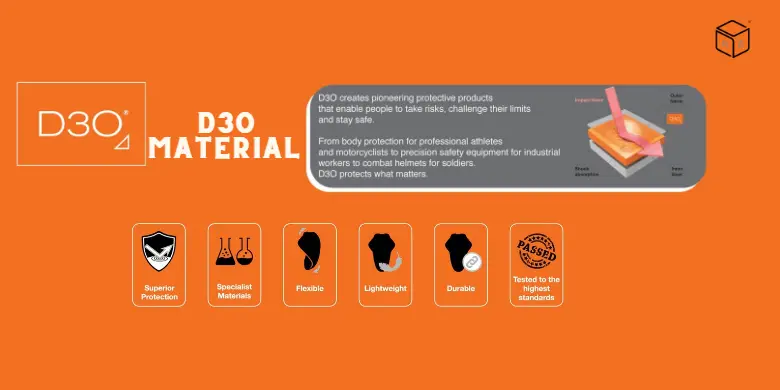In today’s fast-paced business world, staying relevant means constantly innovating, and that’s where New Product Development (NPD) comes in. It’s a game-changer for companies, helping them create and launch new products that meet evolving customer needs. In this article, we’ll take a comprehensive look at NPD, covering everything from why it’s so important to its many benefits, the stages involved, and even real-life examples. Whether you’re a small startup or a large corporation, understanding NPD can be the key to staying competitive and thriving in the ever-changing marketplace. So, let’s dive in and uncover the secrets of successful product development!
Understanding New Product Development
New Product Development (NPD) is like planting seeds for the future of a business. It’s all about introducing something new, whether it’s a product, service, idea, or even a technology, into the market. This process is carefully planned and follows a step-by-step approach, starting from the initial spark of an idea all the way to making it available to customers.
Think of NPD as a journey. First, there’s ideation, where teams brainstorm and come up with potential concepts. Then, these ideas are carefully evaluated to see which ones have the most promise. It’s like sifting through a pile of rocks to find the diamonds.
Once the best ideas are chosen, it’s time for concept development. This is where the rough sketches and blueprints start to take shape, turning ideas into tangible concepts. It’s like turning a dream into a blueprint for a house.
But NPD doesn’t stop there. The next stage is business analysis, where companies dig deep into market research, competition, and potential costs and profits. It’s like doing homework before taking a big trip – you want to know where you’re going and how you’ll get there.
Then comes product development, where the actual creation process begins. Prototypes are built, tested, and refined until they’re ready for the world. It’s like crafting a masterpiece, with each stroke of the brush bringing the vision closer to reality.
Finally, there’s deployment and commercialization, where the product is launched into the market and made available to customers. It’s like releasing a bird into the wild, watching it spread its wings and soar.
Overall, NPD is a vital process for companies looking to stay relevant and competitive in today’s ever-changing market. It’s the engine that drives innovation and growth, helping businesses evolve and meet the needs of an ever-evolving consumer base.
Why NPD Matters
NPD is the lifeblood of innovation-driven companies, offering a plethora of benefits:

- Technological Advancement: New Product Development (NPD) is like giving businesses a superpower – the ability to tap into the latest technologies and trends. It’s like having a crystal ball that lets companies see what’s coming next in their industries. By constantly innovating and developing new products, businesses can stay ahead of the curve and maintain their position as industry leaders. Imagine a race where everyone is trying to reach the finish line first. NPD is like having a turbo boost that propels businesses forward, leaving their competitors in the dust. It’s all about staying one step ahead and anticipating what customers will want before they even know they want it. From cutting-edge gadgets to revolutionary services, NPD is the engine that drives technological advancement. It’s like being on the cutting edge of a wave, riding the momentum of progress and innovation. With NPD, businesses can harness the power of technology to shape the future and stay ahead of the competition.
- Competitive Edge: The ability to outshine their competitors and claim their spot in the market. It’s like having a unique recipe that sets them apart from the rest. By introducing fresh and innovative solutions, companies can leapfrog over their rivals and create a niche for themselves. Think of it as a game of chess, where each move is carefully calculated to outsmart the opponent. NPD allows businesses to make strategic moves that give them a competitive edge. It’s all about staying ahead of the curve and staying one step ahead of the competition. From groundbreaking products to game-changing services, NPD is the key to staying relevant in a fast-paced world. It’s like having a secret weapon that ensures companies always have the upper hand in the market. With NPD, businesses can unlock their full potential and emerge as leaders in their respective industries.
- Diversification: NPD acts as a springboard for companies, propelling them into new territories and expanding their horizons. It’s like opening new doors to fresh opportunities and untapped markets. With NPD, companies can diversify their offerings, introducing a variety of products to cater to different customer needs and preferences. Imagine a restaurant adding new dishes to its menu or a tech company launching a range of innovative gadgets. That’s the power of NPD – it allows companies to spread their wings and explore new avenues for growth. By venturing into uncharted territory, companies can reach a broader audience and create multiple revenue streams. It’s like planting seeds in different fields, ensuring a bountiful harvest regardless of the market conditions. With NPD, companies can adapt to changing trends and consumer demands, ensuring long-term success and sustainability.
- Employee Engagement: When employees are involved in New Product Development (NPD), it’s like igniting a spark of creativity within the organization. Imagine a workplace buzzing with excitement as team members collaborate on brainstorming sessions and contribute their ideas to shape the next big thing. By actively participating in NPD initiatives, employees feel valued and empowered, knowing that their input can make a real difference. This sense of ownership fuels their motivation and drives them to perform at their best, boosting overall productivity. Moreover, NPD provides employees with a platform to showcase their skills and talents, fostering a culture of innovation and continuous learning. As they work together towards a common goal, camaraderie strengthens, and teamwork flourishes. Employee engagement in NPD not only benefits the company by generating fresh ideas and innovative solutions but also creates a positive work environment where employees feel inspired, appreciated, and motivated to contribute their best efforts.
The Stages of NPD

- Idea Generation:Idea Generation marks the exciting beginning of the New Product Development (NPD) journey, akin to planting seeds for future innovations. During this phase, teams gather around to brainstorm ideas, letting their imaginations soar and exploring various possibilities. It’s a creative process where no idea is too outlandish or too small; every suggestion is welcomed and considered. Through brainstorming sessions, market research, customer feedback, and even inspiration from competitors, businesses generate a pool of potential concepts. The goal is to spark innovation and uncover solutions to unmet needs or emerging trends in the market. Sometimes, the most groundbreaking ideas stem from the simplest observations or the most unexpected sources. While Idea Generation may seem like a free-flowing exchange of ideas, it’s a critical step in the NPD process, setting the stage for what’s to come. It’s where the seeds of innovation are planted, ready to be nurtured and cultivated throughout the subsequent stages of development.
- Idea Screening and Evaluation: In the Idea Screening and Evaluation stage of New Product Development (NPD), the focus shifts from brainstorming to scrutiny. Here, the flood of ideas generated in the previous phase undergoes a rigorous assessment process to separate the wheat from the chaff. Teams carefully scrutinize each idea, considering factors like market potential, feasibility, and alignment with the company’s goals and resources. “Does this idea solve a real problem?” is one of the queries they pose. along with “Is there a demand for it in the market?” Ideas are assessed for viability against preset criteria using cost-benefit analysis, feasibility studies, and market research. Those that pass muster move forward to the next stages of development, while others are shelved or refined for future consideration. It’s a crucial stage where tough decisions are made, ensuring that only the most promising ideas progress, while minimizing the risk of investing time and resources in ventures with limited potential for success.
- Concept Development and Testing: In the Concept Development and Testing phase of New Product Development (NPD), the focus shifts from idea to reality. Here, the promising ideas selected in the previous stage are fleshed out into detailed concepts, ready to be put to the test. Teams work to develop prototypes or mock-ups of the proposed products, aiming to capture the essence of the idea in a tangible form. These prototypes are then subjected to rigorous testing and evaluation to validate their feasibility and appeal among the target audience. Through focus groups, surveys, and user testing, teams gather feedback and insights to refine the concepts further. They assess factors like usability, functionality, and overall desirability, ensuring that the final product meets the needs and expectations of potential customers. This phase is critical for identifying any potential flaws or shortcomings early on and addressing them before moving forward with full-scale development. It’s about refining and honing the concept until it’s ready to proceed to the next stage of the NPD process.
- Business Analysis: In the Business Analysis stage of New Product Development (NPD), companies delve deep into the market landscape to gain a comprehensive understanding of the environment in which their new product will exist. This phase involves extensive research and analysis to identify market needs, preferences, and trends. Companies also closely examine their competitors to understand their strengths, weaknesses, and strategies. By analyzing competitor products and market positioning, businesses can identify opportunities for differentiation and competitive advantage. Furthermore, this stage entails evaluating various business models to determine the most suitable approach for bringing the new product to market. Factors such as pricing strategies, distribution channels, and revenue projections are carefully considered to develop a robust business plan. Ultimately, the goal of the Business Analysis stage is to gather actionable insights that inform strategic decision-making and guide the development and launch of a successful new product.
- Product Development: During the Product Development stage of New Product Development (NPD), companies focus on refining the final product and production process to bring their ideas to life. This involves creating prototypes and minimum viable products (MVPs) to test and validate the product’s functionality, design, and performance. In this phase, designers, engineers, and developers collaborate closely to iterate on product designs, incorporating feedback from testing and user insights. The goal is to optimize the product for production while ensuring it meets customer expectations and business objectives. Additionally, companies may conduct test marketing to gather feedback from target customers and refine the product further based on their preferences and needs. By fine-tuning the product and production process, businesses can ensure that the final offering meets quality standards and is ready for mass production and commercialization.
- Deployment: Deployment marks the stage where the product transitions from development to market availability. It involves strategic deployment phases to ensure a successful launch. These phases include commitment to the launch plan, building necessary infrastructure, alpha and beta testing to gather user feedback, and finally, full production deployment. During deployment, companies carefully coordinate marketing efforts, distribution logistics, and customer support to maximize the product’s impact. They may conduct soft launches or limited releases to gauge initial reception and make any necessary adjustments before scaling up production. Effective deployment requires cross-functional collaboration between various departments, including marketing, sales, operations, and customer service. By following a structured deployment plan, companies can optimize resources, minimize risks, and maximize the chances of a successful product launch that resonates with target customers.
- Commercialization: Commercialization is the pivotal stage where the product is officially launched into the market, accompanied by intensified marketing efforts aimed at driving sales and market penetration. It represents the culmination of the new product development journey, transitioning from development and testing to full-scale production and promotion. During commercialization, companies deploy comprehensive marketing strategies to create awareness, generate excitement, and entice consumers to purchase the product. This phase involves executing meticulously crafted marketing campaigns across various channels, including traditional advertising, digital marketing, social media, and public relations. Additionally, companies focus on distribution channels to ensure widespread availability of the product, collaborating with retailers, wholesalers, and e-commerce platforms to reach target customers effectively. Customer support mechanisms are also established to address inquiries, resolve issues, and enhance overall customer experience, fostering brand loyalty and long-term success in the market.
Real-World Examples
Examples of NPD initiatives abound across industries:
- Taco Bell: Introducing new items to their value menu to cater to changing consumer preferences.
- Samsung: Releasing new smartphone models with advanced features and technology.
- Macy’s: Expanding their brand repertoire by adding new brands to their product offerings.
Conclusion
In conclusion, NPD is the cornerstone of innovation and growth for businesses worldwide. By embracing this process and navigating its stages effectively, companies can unlock unparalleled success, drive market differentiation, and secure their position as industry leaders.
Frequently Asked Questions
Que: What is New Product Development (NPD)?
Ans: NPD refers to the process of bringing a new product, service, or technology to the market.
Que: Why is NPD important for businesses?
Ans: NPD helps companies stay competitive, drive growth, and meet consumer demands.
Que: What are the stages involved in NPD?
Ans: The stages include idea generation, screening, concept development, business analysis, product development, deployment, and commercialization.
Que: How does NPD contribute to employee engagement?
Ans: Involvement in NPD fosters creativity and motivation among employees, driving productivity and innovation.
Que: What role does commercialization play in NPD?
Ans: Commercialization marks the official launch of the product into the market, accompanied by marketing efforts to drive sales and market penetration.




